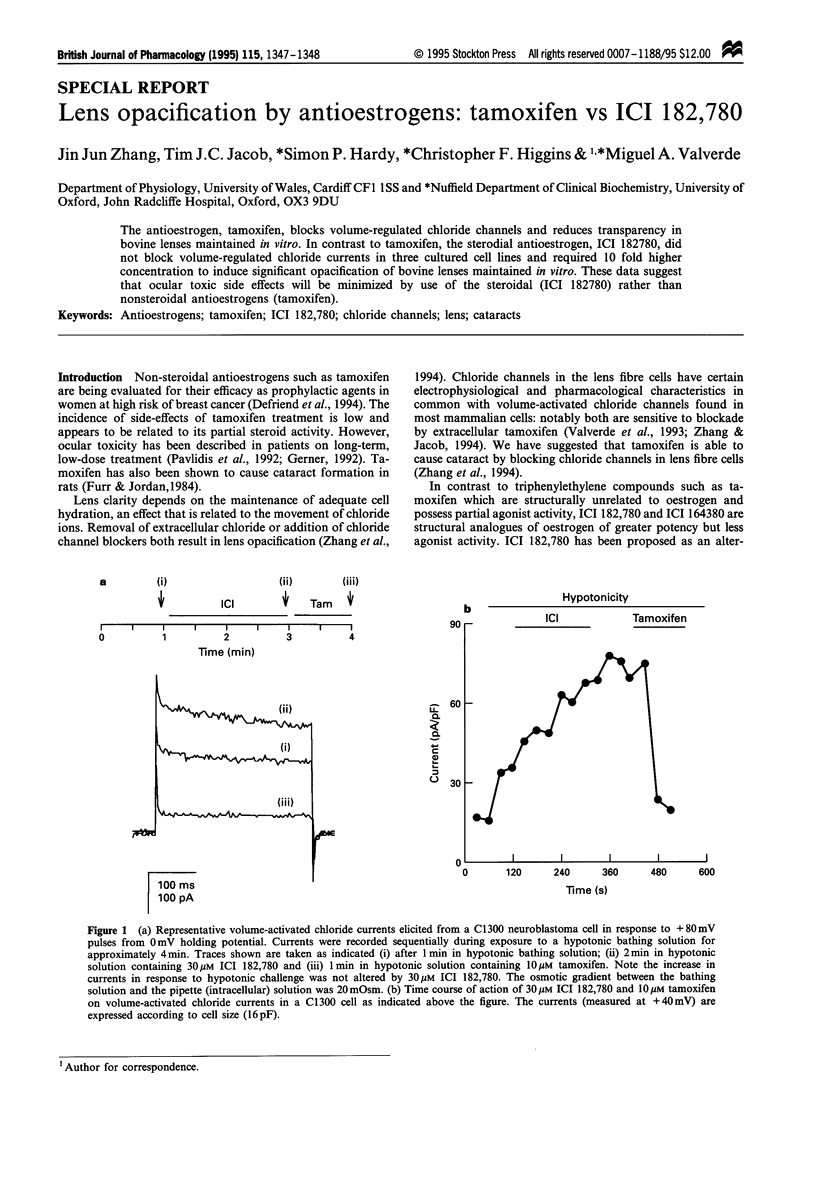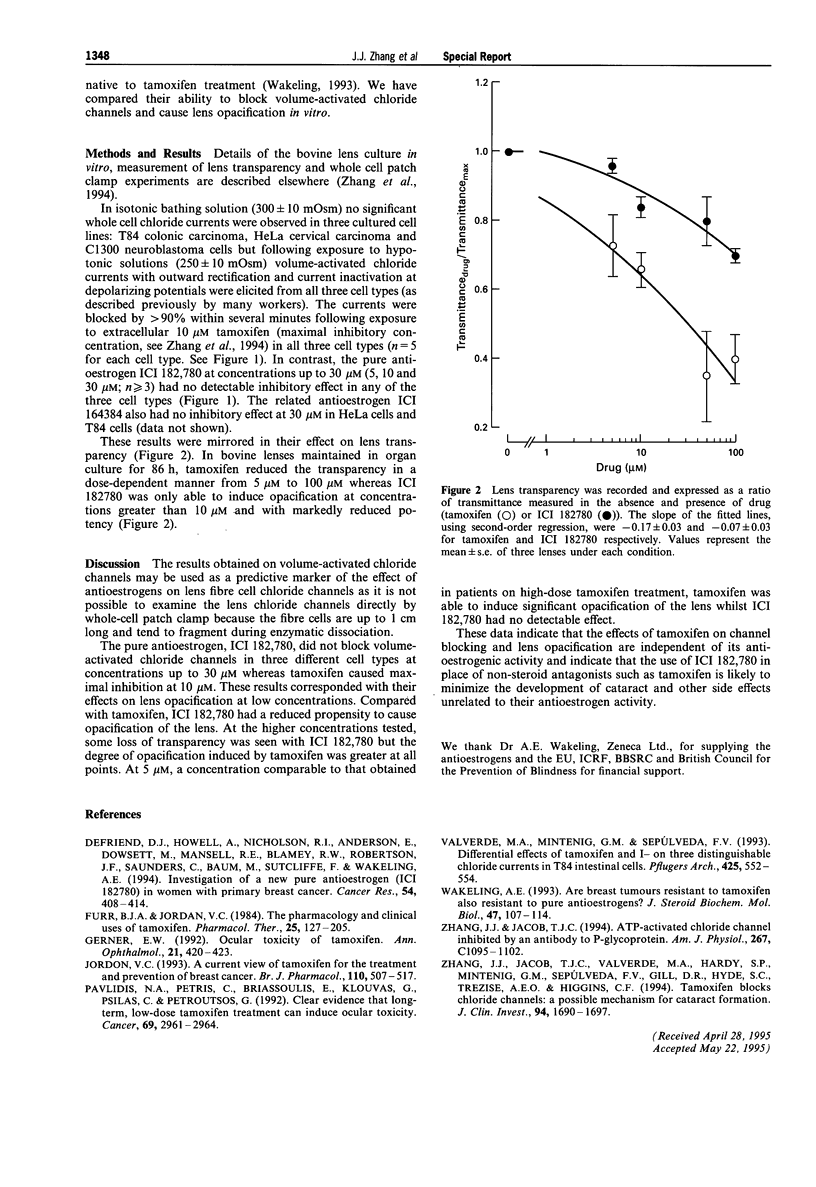Abstract
The antioestrogen, tamoxifen, blocks volume-regulated chloride channels and reduces transparency in bovine lenses maintained in vitro. In contrast to tamoxifen, the steroidal antioestrogen, ICI 182780, did not block volume-regulated chloride currents in three cultured cell lines and required 10 fold higher concentration to induce significant opacification of bovine lenses maintained in vitro. These data suggest that ocular toxic side effects will be minimized by use of the steroidal (ICI 182780) rather than nonsteroidal antioestrogens (tamoxifen).
Full text
PDF

Selected References
These references are in PubMed. This may not be the complete list of references from this article.
- DeFriend D. J., Howell A., Nicholson R. I., Anderson E., Dowsett M., Mansel R. E., Blamey R. W., Bundred N. J., Robertson J. F., Saunders C. Investigation of a new pure antiestrogen (ICI 182780) in women with primary breast cancer. Cancer Res. 1994 Jan 15;54(2):408–414. [PubMed] [Google Scholar]
- Furr B. J., Jordan V. C. The pharmacology and clinical uses of tamoxifen. Pharmacol Ther. 1984;25(2):127–205. doi: 10.1016/0163-7258(84)90043-3. [DOI] [PubMed] [Google Scholar]
- Gerner E. W. Ocular toxicity of tamoxifen. Ann Ophthalmol. 1989 Nov;21(11):420–423. [PubMed] [Google Scholar]
- Jordan V. C. Fourteenth Gaddum Memorial Lecture. A current view of tamoxifen for the treatment and prevention of breast cancer. Br J Pharmacol. 1993 Oct;110(2):507–517. doi: 10.1111/j.1476-5381.1993.tb13840.x. [DOI] [PMC free article] [PubMed] [Google Scholar]
- Pavlidis N. A., Petris C., Briassoulis E., Klouvas G., Psilas C., Rempapis J., Petroutsos G. Clear evidence that long-term, low-dose tamoxifen treatment can induce ocular toxicity. A prospective study of 63 patients. Cancer. 1992 Jun 15;69(12):2961–2964. doi: 10.1002/1097-0142(19920615)69:12<2961::aid-cncr2820691215>3.0.co;2-w. [DOI] [PubMed] [Google Scholar]
- Valverde M. A., Mintenig G. M., Sepúlveda F. V. Differential effects of tamoxifen and I- on three distinguishable chloride currents activated in T84 intestinal cells. Pflugers Arch. 1993 Dec;425(5-6):552–554. doi: 10.1007/BF00374885. [DOI] [PubMed] [Google Scholar]
- Wakeling A. E. Are breast tumours resistant to tamoxifen also resistant to pure antioestrogens? J Steroid Biochem Mol Biol. 1993 Dec;47(1-6):107–114. doi: 10.1016/0960-0760(93)90063-3. [DOI] [PubMed] [Google Scholar]
- Zhang J. J., Jacob T. J. ATP-activated chloride channel inhibited by an antibody to P glycoprotein. Am J Physiol. 1994 Oct;267(4 Pt 1):C1095–C1102. doi: 10.1152/ajpcell.1994.267.4.C1095. [DOI] [PubMed] [Google Scholar]
- Zhang J. J., Jacob T. J., Valverde M. A., Hardy S. P., Mintenig G. M., Sepúlveda F. V., Gill D. R., Hyde S. C., Trezise A. E., Higgins C. F. Tamoxifen blocks chloride channels. A possible mechanism for cataract formation. J Clin Invest. 1994 Oct;94(4):1690–1697. doi: 10.1172/JCI117514. [DOI] [PMC free article] [PubMed] [Google Scholar]


